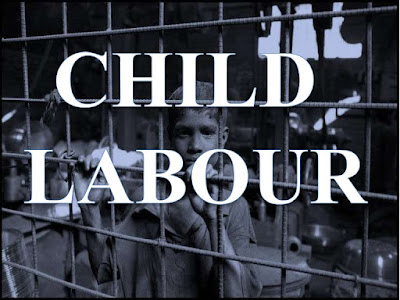COVID-19 Protect children from child labour, now more than ever
World Day Against Child Labour 2020 focuses on the impact of crisis on child labour. The COVID-19 health pandemic and the resulting economic and labour market shock are having a huge impact on people’s lives and livelihoods. Unfortunately, children are often the first to suffer. The crisis can push millions of vulnerable children into child labour. Already, there are an estimated 152 million children in child labour, 72 million of which are in hazardous work. These children are now at even greater risk of facing circumstances that are even more difficult and working longer hours.
This year, the World Day is conducted as a virtual campaign and is being organized jointly with the Global March Against Child Labour and the International Partnership for Cooperation on Child Labour in Agriculture (IPCCLA) .
A joint ILO-UNICEF paper on the impact of COVID-19 on child labour, to be released on 12 June, looks at some of the main channels through which the pandemic is likely to affect progress towards the eradication of child labour.
Prevalence of child labour
Children around the world are routinely engaged in paid and unpaid forms of work that are not harmful to them. However, they are classified as child labourers when they are either too young to work, or are involved in hazardous activities that may compromise their physical, mental, social or educational development. In the least developed countries, slightly more than one in four children (ages 5 to 17) are engaged in labour that is considered detrimental to their health and development.
Africa ranks highest among regions both in the percentage of children in child labour — one-fifth — and the absolute number of children in child labour — 72 million. Asia and the Pacific ranks second highest in both these measures — 7% of all children and 62 million in absolute terms are in child labour in this region.
The Africa and the Asia and the Pacific regions together account for almost nine out of every ten children in child labour worldwide. The remaining child labour population is divided among the Americas (11 million), Europe and Central Asia (6 million), and the Arab States (1 million). In terms of incidence, 5% of children are in child labour in the Americas, 4% in Europe and Central Asia, and 3% in the Arab States.
While the percentage of children in child labour is highest in low-income countries, their numbers are actually greater in middle-income countries. 9% all children in lower-middle-income countries, and 7% of all children in upper-middle-income countries, are in child labour. Statistics on the absolute number of children in child labour in each national income grouping indicate that 84 million children in child labour, accounting for 56% of all those in child labour, actually live in middle-income countries, and an additional 2 million live in high-income countries..
Potential positives
The term child labour can be misleading when it confuses harmful work with employment that may be beneficial to children. It can also ignore harmful work outside employment and any benefits children normally derive from their work.Domestic work is an example: all families but the rich must work at cleaning, cooking, caring, and more to maintain their homes. In most families in the world, this process extends to productive activities, especially herding and various types of agriculture,and to a variety of small family businesses. Where trading is a significant feature of social life, children can start trading in small items at an early age, often in the company of family members or of peers.
Work is undertaken from an early age by vast numbers of children in the world and may have a natural place in growing up.Work can contribute to the well-being of children in a variety of ways;children often choose to work to improve their lives, both in the short- and long-term. At the material level, children's work often contributes to producing food or earning income that benefits themselves and their families; and such income is especially important when the families are poor. Work can provide an escape from debilitating poverty, sometimes by allowing a young person to move away from an impoverished environment.Young people often enjoy their work, especially paid work, or when work involves the company of peers. Even when work is intensive and enforced, children often find ways to combine their work with play.
While full-time work hinders schooling, empirical evidence is varied on the relationship between part-time work and school.Sometimes even part-time work may hinder school attendance or performance. On the other hand, many poor children work for resources to attend school. Children who are not doing well at school sometimes seek more satisfactory experience in work. Good relations with a supervisor at work can provide relief from tensions that children feel at school and home. In the modern world, school education has become so central to society that schoolwork has become the dominant work for most children,often replacing participation in productive work. If school curricula or quality do not provide children with appropriate skills for available jobs or if children do nor have the aptitude for schoolwork, school may impede the learning of skills, such as agriculture, which will become necessary for future livelihood.








0 Comments